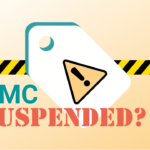
How to build an e-commerce website

Building an ecommerce website – a successful one, that is – will take some thorough research and planning. Many entrepreneurs dive head first into creating their online store, only to pull their hair out later on when struggling to work with the Frankenstein they’ve created (and paid for).
Building the site itself requires some technical savvy and can be challenging, but let’s not forget that at the end of the day, your goal is to supply customers with a product that fulfills a need, in order to turn a profit (and ideally gain some customer loyalty along the way). If you want your online business to thrive, you’ll need to do much more than simply throwing together a Shopify store and hoping customers come flocking. Planning, planning and more planning will help you succeed, which is why we’ve written this article explaining some of the fundamentals involved in creating and designing your first e-commerce website.
#1 Choose a name
You’re probably thinking this is an obvious first step, but choosing a name requires some consideration and foresight. Your store’s name is very important if you want to sell your products online because you need to have a unique domain name. Your domain name, or URL, is the address of your online store and will look something like this:
https://www.thekindkitchen.com
With a physical store, you want your brand/store name to suggest what you sell so that potential customers know what you offer from the get-go, and the same applies for your e-commerce site. If someone happens upon a link to your website and your URL is something vague like “www.familybusiness.com” they may never click on it. What’s the family business? What do they sell? Now The Kind Kitchen, on the other hand, suggests ethically-sourced food products and gives shoppers a hint as to what your store and brand is about.
Now, getting customers’ attention is one thing, but there’s more to choosing the perfect domain name. Think about the last time you wanted to buy something online and you didn’t know where to find it, how did you go about it? You probably opened your laptop or phone, went to your favourite search engine like Google or Yahoo, and typed in what you were looking for. Something like “buy house plants online”. The search engine spits out results that are the most relevant to what you’re searching for, and it does this by looking for key phrases in the domain name that suggest a good match between what the website sells and what you want to buy. The first page of Google results shows…yep, thegardenshop.co.za, where I can buy indoor plants online. So, when you’re choosing your domain name, you want to try and include key phrases that will let Google (or any search engine) know what you sell.
Shopify has a great list of name-generating tools you can use to start coming up with ideas, but remember to stay creative and try to pick a name that’s unique while staying true to your brand.
#2 Choose an e-commerce store platform that fits
Purchasing a domain and building a website from scratch can be incredibly expensive. You’ll have to pay for the domain itself and, if you’re not an experienced software developer, well, you’ll have to hire one. Luckily, we have modern e-commerce platforms and website builders that are a bit cheaper and less complicated to use. Whether you’re just starting out or you have an established brand with thousands of products, these platforms are a great way to get your products online with as little hassle (and spending) as possible.
What is an ecommerce platform?
An ecommerce platform is essentially a software you use to create your website. Once you’ve launched your store, you can easily sell and manage your products through the platform.
Different platforms have different functionalities, so you’ll need to do some research before you choose the perfect one for your business. It’s important to note that there are 2 major types of e-commerce platforms:
- Open-source platforms
- SaaS platforms
Open-source platforms
Open-source platforms give individuals access to the site’s source code. What the hell does that mean? Well, you get direct access to the backend of your website, so you’re able to customize any aspect of your online store if you have a developer on your team to assist you. These platforms- like Magento and OpenCart- are more suitable for those with some coding proficiency, however, there are multiple sources and forums to help you get started. In addition, open-source platforms have a number of modules you can install to add functionalities to your site. With open-source, you get the source code which you can install on any web-host. These platforms generally charge a once-off fee.
FYI: Web-hosting is a service that allows individuals to post a website on the internet, so your web-host is the place where all your website files are stored. This service naturally comes at a cost. Check out Cnet’s list of best web-hosts for 2020.
Pros:
- Complete control over your website
- Highly customizable
- Generally less costly than SaaS month-to-month
Cons:
- Technical abilities required to work with source code
- Extra costs incurred for modules
- Site admin is generally more complex than SaaS platforms
- Must find your own web-host
Saas platforms
SaaS stands for Software-as-a-Service and differs from open-source platforms in that they are cloud-hosted. You will pay a monthly subscription cost for this service, and this way you want need to find a web-host on your own.
These platforms- like Shopify- are much more suitable for beginners and won’t necessarily require having a software developer on your team. Not to worry if you still think these platforms are too complex; there are tons of online resources to get you through the basics as well as plugins (similar to modules) which can add features to your website.
Pros:
- Easy to implement
- Hosting included
- Admin dealt with by Platform Support
Cons:
- Plugins can affect usability
- Less customizable than open-source
- Monthly costs involved with tiered packages
Here’s are some of the most popular platforms out there:
Open-source
- WooCommerce
- OpenCart
- Magento
Saas
- Shopify
- BigCommerce
- 3DCart
EcommerceCEO has a great article comparing their top 10 ecommerce platforms, which we recommend taking a look at.
E-commerce platform integrations
So you’ve chosen Shopify to create your website and now you need to start marketing your products online. Let’s say you want to get the products from your Shopify store onto Amazon. How would you go about this? With the magic of Shopify plugins.

Each store platform has its own app store where you can download a number of plugins//modules that add new functions to your online store and can help you manage and market your products. These plugins/modules fall into a few different categories:
- Shipping
These apps offer basic postage and label printing for your products, with some offering inventory tracking and Pick-up.
- Accounting
Accounting apps help individuals manage invoicing, bookkeeping, inventory, expenses and so on for their online stores.
- Customer loyalty
Loyalty apps allow you to create rewards systems for your repeat customers.
- Email marketing
Email marketing apps integrate with your store platform to collect customer data and send targeted emails.
- Sales channel apps
Third-party apps help you market your products on digital marketing channels like Facebook, Google or Amazon. Using ShoppingFeeder you can push your products to multiple channels and optimize your listings to increase your conversion rate.
There are numerous other apps and modules for both SaaS and open-source platforms. Take a look at Magento’s Top 6 Extensions and Shopify’s 10 best plugins.
#3 Design your online store

Once you’ve created an account on your platform of choice, you can begin designing your online store and uploading your products!
Designing a good online store requires considering your customers’ experiences at every step of the buying journey. Is it easy to navigate your website? Would you say your checkout process is intuitive? Can shoppers filter and search for specific products? Your site navigation needs to be simple, seamless and…fast! Page loading speed is incredibly important and can significantly affect your bounce rate (i.e. shoppers visiting one page and then exiting immediately). Use Google’sPageSpeed Insights to make sure your customers visit your website and stay a while to browse.
Here are a few more useful tips when it comes to designing your website:
- Use professional, beautiful product imagery
- Use detailed product descriptions with all key information included
- Test your check-put processes
- Provide social proof i.e. links to your business’ social media pages
Take a look at BigCommerce’s 22 Best Ecommerce Websites of 2020 for more design ideas.
#4 Add an SSL certificate
Adding an SSL certificate to your site assures your customers that any information they provide to you (email address, credit card info, etc) is safe and encrypted. Checking for security just takes a quick look at the address bar, so make your get that certificate to avoid shoppers abandoning their carts before checkout is complete.

Additional resources:
Shopify’s guide to SSL certificates
WooCommerce’s guide to SSL certificates
SSL certificates not only make your shoppers feel safe, but also help you rank higher in Google search!
#5 Set up payment gateways
Payment gateways are responsible for processing and authorizing credit or debit card payments from your customers to you. There are a number of options available to you and it’s crucial you choose a gateway your customers can trust. The last thing you want is a cart full of abandoned products. So which payment gateways are well-known among shoppers?
Be sure to check that your gateway is secure and don’t forget to look for hidden transaction fees. You want to make sure the gateway you choose is affordable for your business.
#6 Launch your store!

And now, if you’re finally ready, it’s time to publish your perfect online store and start making some money!





